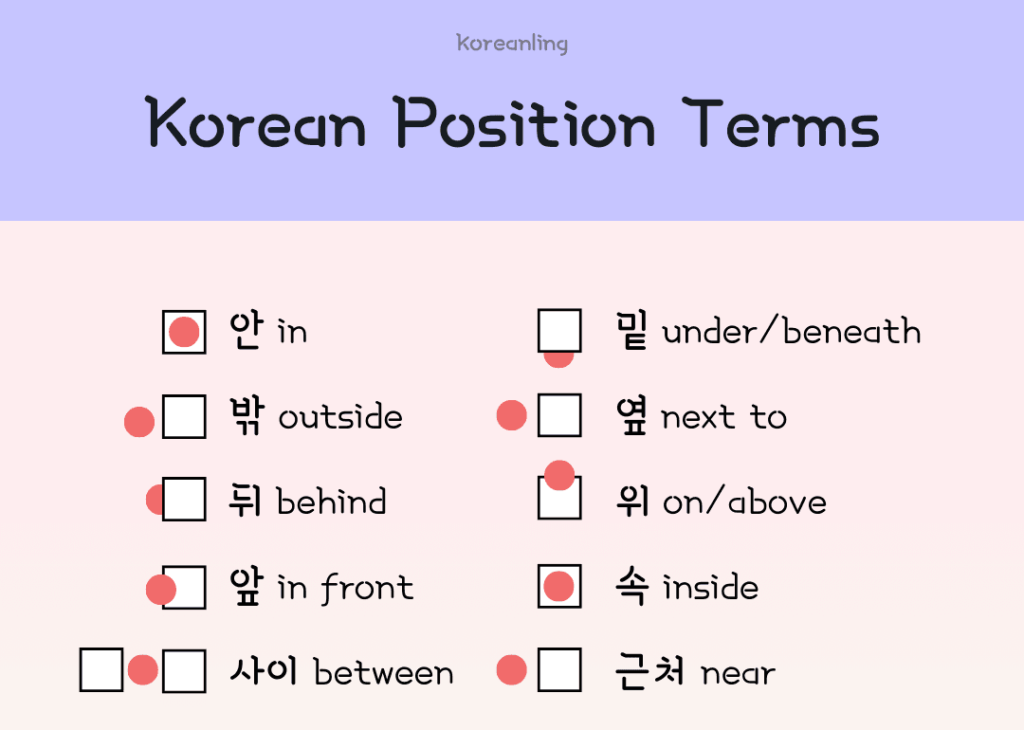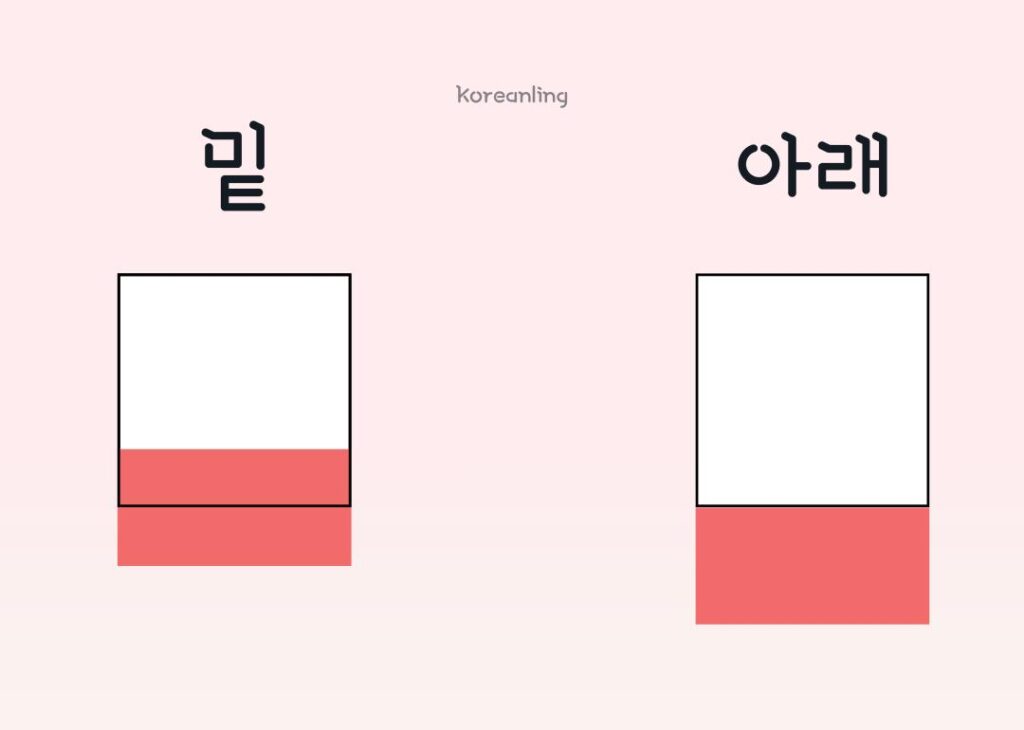Today we’re getting into Korean prepositions and positions! Learn your right from your left and up and down (just like EXID). This’ll be quick and easy vocab so let’s get into it.

Korean Prepositions
위: on/above
안: in
속: inside, among
밖: outside
밑: under/beneath
아래: under/beneath
앞: in front
뒤: behind
왼쪽: left
오른쪽: right
건너편: across from
사이: between
가운데:in the middle
옆: next to
근처: near
한국어 교과서는 책상 위에 있어요: The Korean textbook is on the desk
그의 강아지는 소파 아래에 있어요: His puppy is under the sofa
고양이는 제 서랍 안에 숨어 있었어요: The cat was hiding in my drawer
Location Particle ~에
~에 is a simple particle so I’ll cover it quickly here! You might have noticed in the example sentences above it’s tied to the location words. Luckily this particle is as is, without changing depending on consonant/vowel like others.
When you are doing an action at/in a location then the particle ~에 becomes ~에서. So you may find sentences that use both, telling you “position에 and location에서” like this example below:
욕실에서 위에 그림을 걸고 있어요: I’m hanging up a picture in the bathroom
욕실: bathroom/washroom
~에서: location action particle
위: up/above
~에: location particle
그림: picture
걸(다): to hang (up)
있어요: to do

Difference Between 밑 & 아래
Both 밑 and 아래 mean beneath/under but there are some key differences for when you should use one over the other!
밑 means more of the bottom area of something. This includes the bottom area inside, the general bottom area, and anything directly underneath it. 아래 refers to anything underneath the bottom and can include things that are far below.
So for example, to say under the sea like we typically mean it, or the sea floor, you would use 밑. Using 아래 would have more of a connotation like Earth’s mantle, something literally underneath the entire sea.
저 바다 밑: Under the sea~



0 Comments